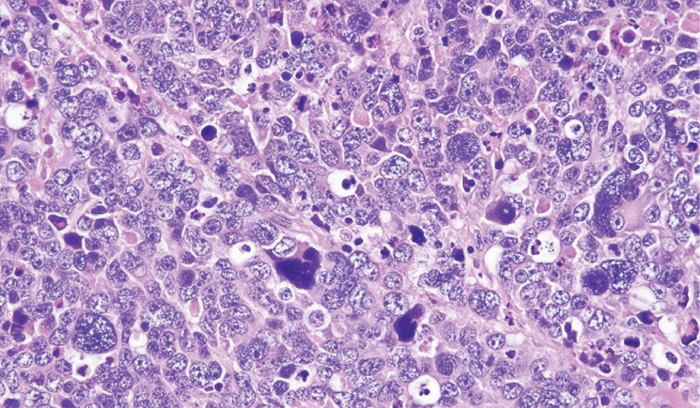Medulloblastoma
Medulloblastoma

Summary of
Medulloblastoma
Medulloblastomas comprises the vast majority of pediatric embryonal tumors and by definition arise in the posterior fossa, where they constitute approximately 40% of all posterior fossa tumors. Other forms of embryonal tumors each make up 2% or less of all childhood brain tumors.
The clinical features of childhood embryonal tumors depend on the location of the tumor and the age of the child at the time of presentation. Embryonal tumors tend to be fast-growing tumors and are usually diagnosed within 3 months of the initial onset of symptoms.
(Source: National Cancer Institute)
Available CBTN Biospecimens
participants with flash-frozen tissue available
participants with match blood
participants with match parental specimens
participants with cerebral spinal fluid
Available CBTN Pre-clinical Models
genomically characterized cell lines with data available
genomically characterized pdx with data available
How do I get access to the specimens?
To request any of the biospecimens, or pre-clinical model please fill out this form.
Request take approx. 3 months and will require review by the scientific committee and MTA.
Need help? Contact us at research@cbtn.org
Explore the data in these informatics portals
How do I get access to the data?
To access the data please follow these instructions. Need help? Contact us at research@cbtn.org
You can access processed data today here by simply logging in to PedcBioPortal
You can request raw data by completing this form. The review normally takes 1 week. Once approved you can access the raw data by creating cohorts of interest on the Kids First Data Resource Portal and performing analysis on the cloud in Cavatica
featured
Scientific Projects

Specimen
Ongoing
Identifying Tumor Cell Vulnerabilities in Recurrent/Progressive Human Medulloblastomas by Single-cell RNA-seq
Medulloblastoma is the most common form of brain cancer, and many patients experience tumor progression/recurrence despite treatment. Using flash frozen samples provided by the Children’s Brain Tumor Network, researchers will try to better understand medulloblastoma recurrence.
Medulloblastoma

Ninib Baryawno

Specimen
Ongoing
Interactions Between Astrocytes and Tumor Cells are Critical for Medulloblastoma Growth
Astrocytes, a subset of nervous system cells found in medulloblastoma, may support the growth and survival for a subset of medulloblastoma tumors. Using samples provided by the Children’s Brain Tumor Network, researchers will seek to validate previous results in hopes of advancing development of novel therapeutic options.
Medulloblastoma

Zeng-jie Yang

Data
Ongoing
Epigenetic Drivers in Medulloblastoma
Medulloblastoma is the most common pediatric brain tumor. Researchers will analyze genetic data provided through the Pediatric Brain Tumor Atlas to better understand medulloblastoma subgroups and the therapies needed to treat them.
Medulloblastoma

Alexandros Tzatsos

